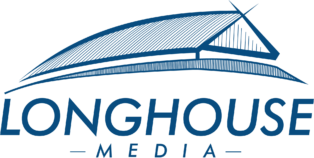PPC campaigns are a great way to drive targeted traffic to your website and get instant results. However, the success of a PPC campaign depends on its optimization—if done right, it can help you maximize your ROI.
Understanding Pay-per-click (PPC) Campaigns
Before optimizing your PPC campaigns, it’s essential to understand what they are and how they work. In a nutshell, PPC is an online advertising model where you pay for each click on your ads that lead people to your website.
It starts with creating ads and involves an auction process where advertisers like you bid on keywords related to your product or service. Then, when someone searches using those keywords, your ad may show up on the search engine results page (SERP), and if people click on it, they’ll be sent to your landing page, and you’ll be charged for that click.
The idea behind this type of advertising is that you only have to pay when your ads actually generate visits or leads. This means you can get the most bang for your buck since you don’t have to spend money on impressions that don’t lead to conversions.
Optimizing Your PPC Campaigns
Now that you better understand how PPC campaigns work, it’s time to get down to the nitty-gritty of optimizing them for better results. Here are some solid PPC strategies you can use to maximize the success of your campaigns.
1. Conduct keyword research.
Keywords are the backbone of any successful PPC campaign, so you must conduct thorough research to identify the best keywords to target. You can use tools like Google’s Keyword Planner and Ubersuggest to find relevant, high-traffic keywords applicable to your product or service.
You should also consider employing long-tail keywords, as they’re often less competitive and can target a narrower audience. For example, if you’re selling running shoes, instead of only using the keyword “running shoes,” you might also target “men’s running shoes size 11” or “lightweight running shoes for beginners.”
2. Create compelling ads.
Your ad copy serves as your business’s first impression that can potentially grab the target customer’s attention and convince them to click on your ad. Make sure your ads are clear, concise, and compelling—they should include actionable language, eye-catching visuals, a strong call to action (CTA), and relevant keywords.
Aside from these, you should also run other strategies like video marketing in parallel with PPC campaigns, as it can lower your cost-per-conversion by allowing people to learn more about your product or service quickly.
3. Use negative keywords.
Negative keywords are words or phrases that help you filter out search queries that aren’t relevant to your business or products. For instance, if you don’t sell children’s clothing, add the term “kids” to your list of negative keywords so that your ads won’t appear when someone searches for “children’s clothes.” Or, if you’re selling luxury bags, list the term “cheap” to avoid targeting budget shoppers. By doing this, you can ensure that your ads are only seen by those most likely to be interested in your offer.
4. Optimize your bidding strategy.
The bidding strategy you utilize will significantly impact the success of your PPC campaigns. To get the most out of your budget, you may use an automated bidding strategy like Cost-Per-Click (CPC) or CPM (cost per mile). CPC is ideal if your goal is to generate clicks and leads, while CPM is better suited when you simply want to increase your brand awareness.
However, if you prefer to have more control over your bidding, you can always opt for manual bidding strategies, such as enhanced cost-per-click, which allows you to set a maximum CPC on specific keywords or audiences with a higher conversion rate. Conversely, you can also go for Target Cost-per-Acquisition (CPA), also known as target ROAS or return on ad spend, which lets you set a particular amount you’re willing to pay for each conversion.
5. Take advantage of retargeting.
Retargeting is a powerful way to stay in front of users who have already interacted with your website or landing pages but haven’t yet converted. You can set up retargeting campaigns on platforms like Facebook Ads or Google Ads to create campaigns tailored to these users’ interests or past behaviors.
This can include offering them special offers, discounts, or additional information about the product they’ve viewed on your site. By providing a gentle reminder of your product or service, you can stay top-of-mind and increase their chances of returning to finish the conversion.
6. Test different ad variations.
Testing several ad variations is a great way to see which ones resonate with your target audience and produce the best results. Leverage A/B testing and experiment with different headlines, ad copy, and visuals to see what works best.
You should also switch up your ads regularly to keep them from becoming stale and reduce the likelihood of people getting “ad blindness” or ignoring them altogether. Furthermore, test multiple ad groups and landing pages to ensure you deliver the most relevant and engaging user experience.
7. Track, measure, and analyze your results.
Finally, don’t forget to track, measure, and analyze your PPC campaign result regularly to understand which campaigns are performing well and which ones need improvement.
Monitor your CPC, CTR, ROAS, and other key metrics to gain insights on how to tweak your campaigns for better results. Additionally, use tools like Google Analytics to analyze the behavior of your PPC visitors, such as how long they stayed on your website, which pages they’ve visited, and if they converted or not. You should also keep an eye on the competition—see their strategies and tactics and how you can one-up them.
Conclusion
There’s no denying that optimizing PPC campaigns is a lot of work. After all, there’s no one-size-fits-all approach to successful paid search advertising. Still, following the tips above can go a long way in helping you get the results you’re looking for—whether it’s leads, sales, or brand awareness.
With patience and experimentation, you can ensure your PPC campaigns perform at their best and generate the highest ROI possible. Good luck!





